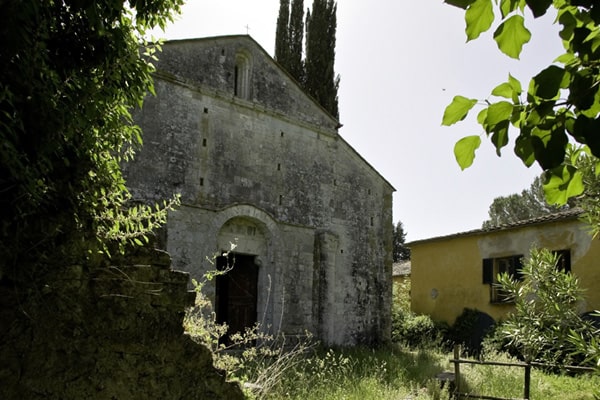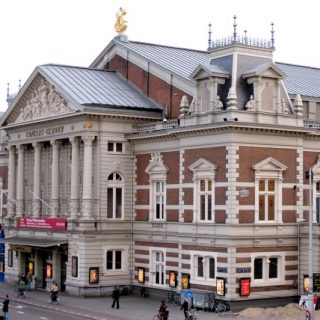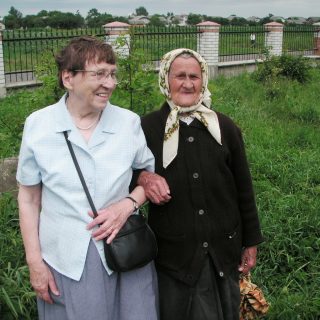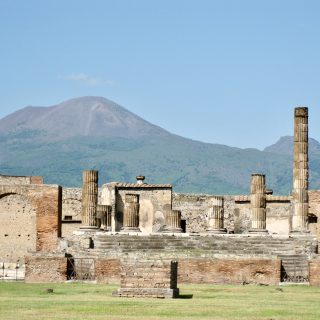This week’s edition of ‘A world of inspiration‘ is brought to you by Gloria Casinadirosa who lives in the gorgeous hills of Tuscany. This romantic story is an ode to days bygone when travelling was seen as a luxury few could afford, as well as our unceasing quest for adventure. Gloria’s beautifully-worded narrative superbly captures the essence of what travelling is about and the value of sharing our experiences.
The Rebel
Life is a journey and like all journeys, it’s all about who you cross paths with. When I think about my own journey, and the people who have been a source of inspiration for me in one way or another, I cannot but think of the first person I met with a true passion for travel. She was born in 1910 to a very poor family in my tiny village in Tuscany. She had never been abroad, but she never missed the opportunity to go anywhere and was always thrilled about these trips, even if it was only to go to the next village for a social dinner. She claimed to have travelled extensively in her life and I guess that, for a “girl” of that period coming from rural Tuscany, she had indeed.

She used to tell me all sorts of anecdotes about her life. When she was just 7 years old, her parents had sent her to Milan “per serva”, as she would say (“as a servant”). To a little Tuscan girl, forced by poverty to leave home at such a young age to work as a maid for a wealthy family in Northern Italy, this trip to the big city must have seemed like a never ending journey. And yet, she always spoke of that trip with unbelievable enthusiasm. She remembered with joy the hard life that she had led in the rich people’s home. She used to say proudly that “la signora”, “the Lady”, had never raised a hand to her (which apparently was an unusual thing at that time). The woman must have liked this little girl, because she would bring her along anywhere she went.
old things are the witnesses of what you were and did in your life
The stories I loved the most were those about a summer holiday villa. “The Lady” would spend a month by a lake in a villa with gardens “as big as the village park” and a large ballroom that would hold “more people than the main square” in our village. I would hear of ladies with dresses “as soft as whipped cream” and of gentlemen with “golden teeth” and “golden watches”. But the thing that apparently had exercised the strongest fascination on the woman were the ladies’ fans. I remember her sitting in the Piazza, proudly showing off an old, worn-out fan that “the Lady” had given her more than 70 years before. I did not understand why she would use such an old fan in public and brag about it too. She explained to me once that old things are the witnesses of what you were and did in your life: that fan proved that she had “travelled and seen things”, none of which could be said of the other old ladies sitting next to her on the “murello”, an old stone bench in the main square of the village.
she believed that only ignorant people were scared of leaving the village
Later, “il Signore”, the Lady’s husband, bought a farm near our village by the 10th century Ardengheschi Abbey and they moved there permanently. She spent the rest of her life working for that family up to “the Lady’s” death, always following her when she left to go on vacation to some of her family’s properties. For this reason, people called her “the rebel”, because she would leave no matter what, leaving her children and husband behind. She spoke about this proudly, because she believed that only ignorant people were scared of leaving the village, and she was happy not to be one of them.
In the years leading up to “the Lady’s” death, she would sometimes let me go to the “Abbadia” with her. We would take a long walk to the farm on the dirt road she had walked back and forth everyday for over 50 years, often with wet laundry too, since the public fountains were halfway between the village and the farm.

She knew lots of stories about all the different places along the way: she would point to the field where she had once seen a ghost, to the tree where a man from the village had hung himself, to the ruins of a shack where the people from the village had gathered to escape the bombings, or to the meadow where she had found the skulls of the monks of the abbey.
She also liked to bring up memories of a “gigantic” wooden sculpture of the Virgin Mary she had seen in Pisa. I will never forget the bundle of emotions that I suddenly felt when, having moved to that city to study at the University, I found myself right in front of that very same sculpture in Piazza Garibaldi. It was much smaller than I had imagined it, but then, I was much bigger than that little girl when I saw it for the first time.
This woman taught me the value of travelling and most importantly she inspired me both to be curious about new places and to look at known things with new eyes and an open mind. She also taught me the value of sharing with other people my passion for this beautiful region and the life we live here. Every time I walk by the wooden sculpture of the Virgin Mary in Pisa, I wish I could still be able to share my travel stories with her. But in a way I am: she was my great-grandmother and I am sure she’s still travelling with me.

Gloria Casinadirosa was born and bred in Tuscany and divides her time between the small village of Civitella Marittima near Siena, and the town of Pisa where she works as a teacher. Gloria shares with us her passion for everything Tuscan via her blog At Home in Tuscany.
Read Gloria’s article about the enchanting Ardengheschi Abbey featured in her article above.
Follow Gloria on Twitter.
Read other ‘World of inspiration‘ articles:












[…] is one very Tuscan comfort food that I remember from my early childhood years and which my great-grandmother Tilde used to prepare for me whenever she was looking after me. It was typically my […]
[…] Most of my relatives still live in the village, which is in itself an unusual turn of events. In a way, my roots were bound to go this deep: both my parents are from the village, my 4 grandparents were all from the village (my grandma is still alive and kicking: she’s only 73 so she’ll hopefully still be around for a long time!), 7 of my 8 great-grandparents were from the village, and I guess I could go back in time and find that most of my ancestors were from here. I have been lucky enough to have young parents and grandparents, so that my parents’ aunts and uncles have been my aunts and uncles too, and their cousins have been my cousins too. Some of them were in fact closer in age to me than to them. I have known 3 of my great-grandparents, who passed well after I was 10 (the last one as late as 1994, and I have written a post about her for the Velvet Escape Blog, The Rebel). […]
[…] The Rebel […]
[…] The Rebel […]
[…] The Rebel […]
[…] The Rebel […]
[…] The Rebel […]
[…] The Rebel […]
[…] a recent guest writer on this blog wrote, “Life is a journey and like all journeys, it’s all about who you cross […]
Thank you Gloria for contributing a beautiful story. I enjoyed it tremendously! All kudos to you!
Best regards,
Keith
Thank you Kith and thank you Cindy! When you are not a native speaker it’s sometimes hard to express things as you would like.
I have to say, this has been a fantastic opportunity to remember things that I hadn’t thought of in a long, long time. Everyday life sometimes makes you forget precious moments.
Hi Cindy,
Thank you for your comment. I agree with you. It’s a beautiful story and Gloria did a fantastic job in telling it!
Cheers,
Keith
Beautiful story, exquisitely told. I can feel the inspiration as memories were recalled by such a gentle soul!